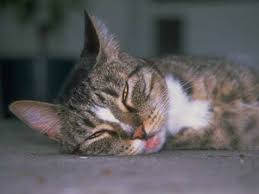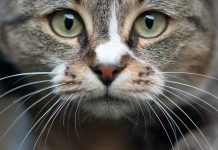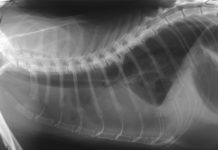When vets face a sick cat, the first thing that they do is putting together a list of the different diseases, which may be responsible for it. The common ones are on top of the list and the rare cat conditions are at the bottom part. This is what they call a differential diagnosis. Vets will then make an indicative plan to begin eliminating or confirming each potential condition. Commonly the answer is available on top of the list, yet sometimes vets get all their way too through the rare diseases at the bottommost part before a prognosis is being reached. In this article, we will be discussing the different common rare cat diseases that you need to know, which may be affecting your cat. Read on to learn more!
DNA and Its Importance in Accurate Prognosis and Treatment

DNA or deoxyribonucleic acid is the fundamental molecule that lies in the base do the living world. It is what carries the genetic instructions for the growth, development, and functioning of the organisms. In various circumstances, because of the genetic mutations, various genetic anomalies might happen that may trigger condition. This kind of conditions are well known as hereditary illnesses.
With the assistance of the WGS or whole genome sequencing, we may now not just determine the DNA sequence of a particular organism, but we’re also able to identify the different irregularities, which causes the hereditary illnesses. The recognition of genetic diseases is vital for the improvement of the timely and accurate prognosis and treatment.
Common Rare Cat Diseases You Need To Know
Here are some of the most common rare cat diseases that you must know that may be affecting your cats:
Dysautonomia
The dysautonomia or the Key-Gaskell is due to the abnormalities in the nervous system. The main cause hasn’t been identified. The cats with dysautonomia usually experience poor appetite, vomiting, and pupils, which do not respond to the light normally, dehydration, elevation of the 3rd eyelid, difficulty in urinating and eating, constipation, slow heart rate, as well as poor tear production. Treating the different symptoms of this condition might make the cats feel much better, yet most are ultimately euthanized because of poor life quality.
Acromegaly
This particular condition is due to an overproduction of the growth hormone in the body, frequently because of a tumor in the pituitary gland. The result of this is an overly huge cat with enlarged organs and a big head. Acromegaly is in association with the diabetes mellitus and heart condition development as well. The treatment for acromegaly in the cat has been unfulfilling.
Feline Infectious Peritonitis
A lot of cat owners have already heard of the feline infectious peritonitis or FIP, even if the condition is somewhat rare. The IP is due to a viral infection. What’s odd in this condition is that most of the cats are infected with the causal virus if they are still young, yet just a small proportion of the infected cats go on and develop the condition at a late date because of the virus mutating in the bodies.
The cats who have this condition may develop an array of symptoms. This includes:

- Seizures
- Behavioral changes
- Difficulty in walking
- Eye abnormalities
- Difficulty in breathing
- Enlarged lymph nodes
- Fluid build-up in the chest and abdomen
- Weight loss
- Lethargy
- Poor appetite
The treatment for feline infectious peritonitis is restricted to supportive therapy.
Feline Hyperesthesia
The feline hyperesthesia syndrome is a prognosis of exclusion. The cats with feline hyperesthesia may develop several unusual behaviors. This includes biting themselves to the extent of self-harm, odd vocalizations, rippling skin, seizure-like episodes, and random episodes of running or jumping. Before cats get diagnosed with the condition, the more common causes of the symptoms like these need to be ruled out. The treatment with some anti-anxiety medications may be beneficial to some cats with feline hyperesthesia.
Notoedric Mange
A lot of diseases might make the cats itchy, comprising the common once like seasonal allergies and flea or tick infestations. The notoedric mange is one more possibility. This condition is due to microscopic mites, which are passed in between cats. The mites that burrow into the skin where they cause intense itching and thick crusts, often all over the head, front legs, and neck. Treating all the cats, which live altogether with a treatment to kill the mites must take care of the condition.
Health is Wealth
The five common rare cat diseases discussed briefly above all relatively rare illnesses, which affect small parts of the cat population. Nevertheless, the clinical significance is high notwithstanding the low incidence of them.
We are hoping that this brief discernment, we have offered you an inclusive understanding about the often underserved and overlooked cat health conditions. To make sure that your cat is safe, always take into account paying your vet a visit, every once in a while.









